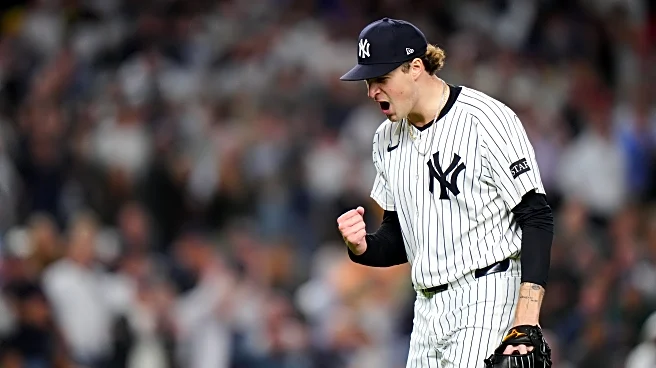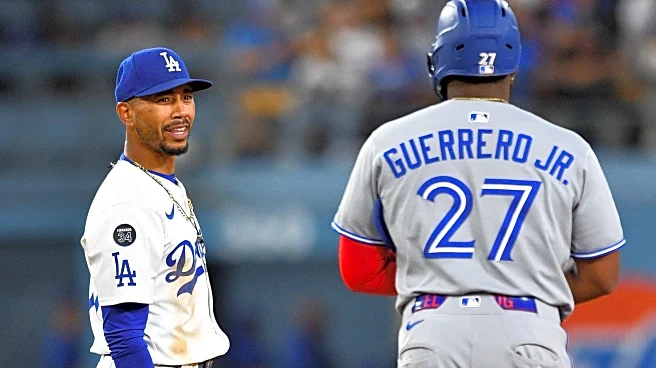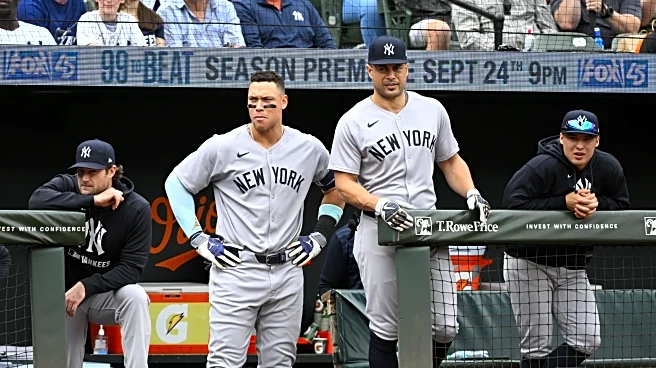What's Happening?
Major League Baseball's farm systems have produced a range of impressive statistics from their top prospects in 2025. Notable performances include Trey Yesavage of the Blue Jays, who achieved a 41.1% strikeout
rate, leading among 1,383 Minor Leaguers with at least 50 innings pitched. Nate George of the Orioles posted a 159 wRC+, while Ty Johnson of the Rays had a 25.8 K/BB ratio. Other standout stats include Spencer Jones of the Yankees with 35 home runs and Tommy Hawke of the Guardians with 65 stolen bases. These statistics highlight the potential future stars of MLB as they continue to develop their skills in the Minor Leagues.
Why It's Important?
The performance of these prospects is crucial for MLB teams as they look to build their future rosters. High strikeout rates, impressive batting averages, and strong on-base percentages indicate players who could significantly impact their teams at the major league level. These stats not only reflect individual talent but also the effectiveness of each team's development programs. As these players progress, they could become key contributors to their respective teams, influencing game outcomes and team strategies. The success of these prospects can also affect team decisions regarding trades, player promotions, and long-term planning.
What's Next?
As these prospects continue to develop, MLB teams will closely monitor their progress and make decisions about their future roles. Some players may be promoted to the major leagues, while others might be involved in trade discussions as teams look to strengthen their rosters. The upcoming seasons will be critical for these players to prove their readiness for the big leagues. Teams will also evaluate their farm systems' effectiveness in nurturing talent, potentially leading to changes in coaching staff or training methods to optimize player development.
Beyond the Headlines
The success of these prospects could lead to increased attention on the importance of farm systems in MLB. Teams may invest more in scouting and development to ensure a steady pipeline of talent. Additionally, the achievements of these young players could inspire future generations of athletes, emphasizing the significance of hard work and dedication in reaching professional levels. The cultural impact of these prospects extends beyond the field, as they become role models for aspiring baseball players.












